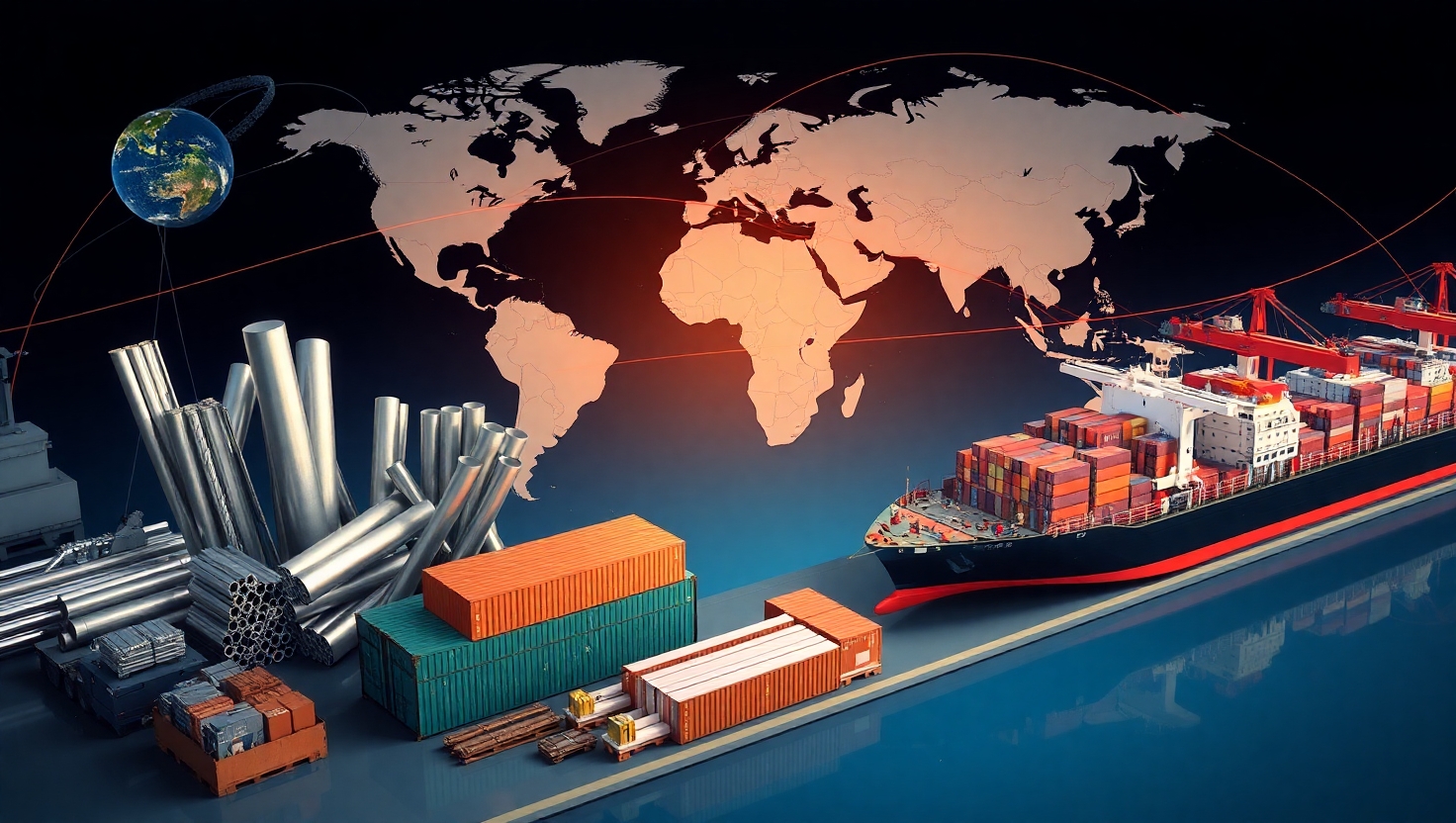Understanding the Impact of Aluminum Tariffs on Global Supply Chains
Published by: ALUTimes | Date: July 17, 2025
Table of Contents
- Introduction
- What Are Aluminum Tariffs?
- Historical Context of Aluminum Tariffs
- Recent Tariff Changes in 2025
- Supply Chain Disruptions
- Price Fluctuations in Global Markets
- How Industries Are Adapting
- Geopolitical Ramifications
- Case Study: UAE’s Role in U.S. Supply Chain
- Future Outlook and Mitigation Strategies
- Disclaimer
Introduction
Aluminum tariffs have become a significant point of discussion in global trade and manufacturing sectors. As countries seek to protect local industries or enforce geopolitical influence, tariffs act as both a shield and a tool. In 2025, changing policies, especially from the U.S., China, and the EU, have triggered a new wave of global supply chain adjustments. This article explores the multifaceted impacts of aluminum tariffs on global supply chains, providing insights for manufacturers, importers, and policymakers.
What Are Aluminum Tariffs?
Tariffs are taxes imposed on imported goods. When applied to aluminum, they increase the cost of foreign metal, encouraging domestic sourcing or penalizing certain exporters. These tariffs are often percentage-based (e.g., 10% on imported aluminum) and vary based on country, product type (raw, semi-finished, or finished), and trade agreements.
Historical Context of Aluminum Tariffs
The aluminum industry has witnessed several waves of protectionist measures. In 2018, the U.S. imposed Section 232 tariffs citing national security, affecting imports from China, Russia, and even allied nations like Canada. The goal was to revive American smelters. However, this led to retaliatory measures, increased input costs, and a realignment of supply routes.
Recent Tariff Changes in 2025
In Q1 2025, President Trump reinstated and increased aluminum import tariffs to 50% for several countries, including the UAE, India, and Vietnam. This sparked a 20% surge in U.S. aluminum imports just before implementation as buyers rushed to stockpile.
Countries like the UAE, which saw a 124% quarterly increase in exports to the U.S., became critical players. Canada remained a top supplier, but alternative routes grew in importance.
Supply Chain Disruptions
Tariffs result in complex disruptions, such as:
- Delay in Imports: Customs procedures and compliance checks slow down shipments.
- Material Shortages: Sudden policy shifts create demand-supply mismatches.
- Increased Inventory Costs: Companies hoard materials to hedge against rising prices.
- Supplier Diversification: Buyers shift to tariff-free countries, affecting existing supplier contracts.
Price Fluctuations in Global Markets
Aluminum pricing is highly sensitive to tariffs. A 10% tariff can lead to a 12–15% price hike for end-users. In 2025, global aluminum prices touched USD 3,200 per tonne—up from USD 2,700 in late 2024. Premiums also surged, with Midwest U.S. premiums rising 30%.
How Industries Are Adapting
To counteract tariff shocks, industries are:
- Onshoring: Setting up domestic smelting or extrusion units
- Stockpiling: Buying in bulk before tariffs hit
- Value Engineering: Redesigning products to use less aluminum
- Vertical Integration: OEMs acquiring suppliers to control costs
Geopolitical Ramifications
Tariffs often lead to trade disputes. The WTO has received multiple complaints, especially around discriminatory tariffs. Countries are retaliating with their own levies on U.S. goods. In Asia, regional agreements are being renegotiated to bypass Western trade restrictions.
Case Study: UAE’s Role in U.S. Supply Chain
In March 2025, UAE exported 95,900 tonnes of aluminum to the U.S.—more than its usual quarterly total. This resulted from rapid pre-tariff purchases. Analysts estimate UAE could now account for 29% of total U.S. aluminum imports if trends continue.
The U.S. and UAE are currently negotiating a trade exemption agreement. If successful, it would solidify UAE’s strategic position in the U.S. aluminum ecosystem.
Future Outlook and Mitigation Strategies
Experts suggest the following:
- Invest in Recycling: Secondary aluminum is tariff-free in many jurisdictions.
- Negotiate Bilateral Agreements: Custom deals can mitigate blanket tariffs.
- Monitor Policy Trends: Businesses must stay agile to changing regulations.
- Leverage Technology: Smart logistics can reduce tariff-driven costs.
Tariffs are likely to remain a tool of trade influence. Companies should prepare strategically, not reactively.
Disclaimer
This content is for informational purposes only and does not constitute legal or trade advice. Always consult your trade compliance and legal team before making decisions based on tariff policies.

